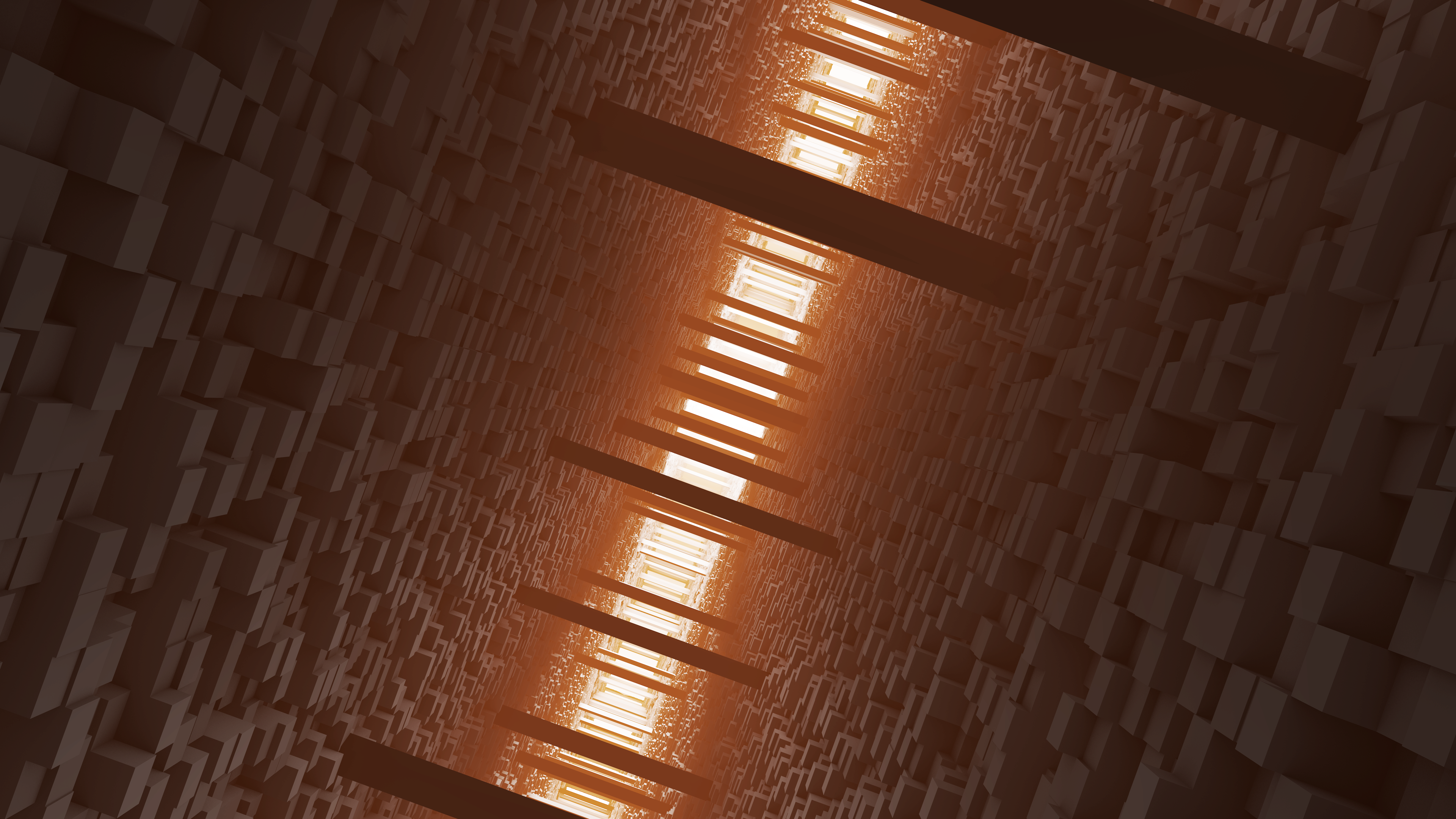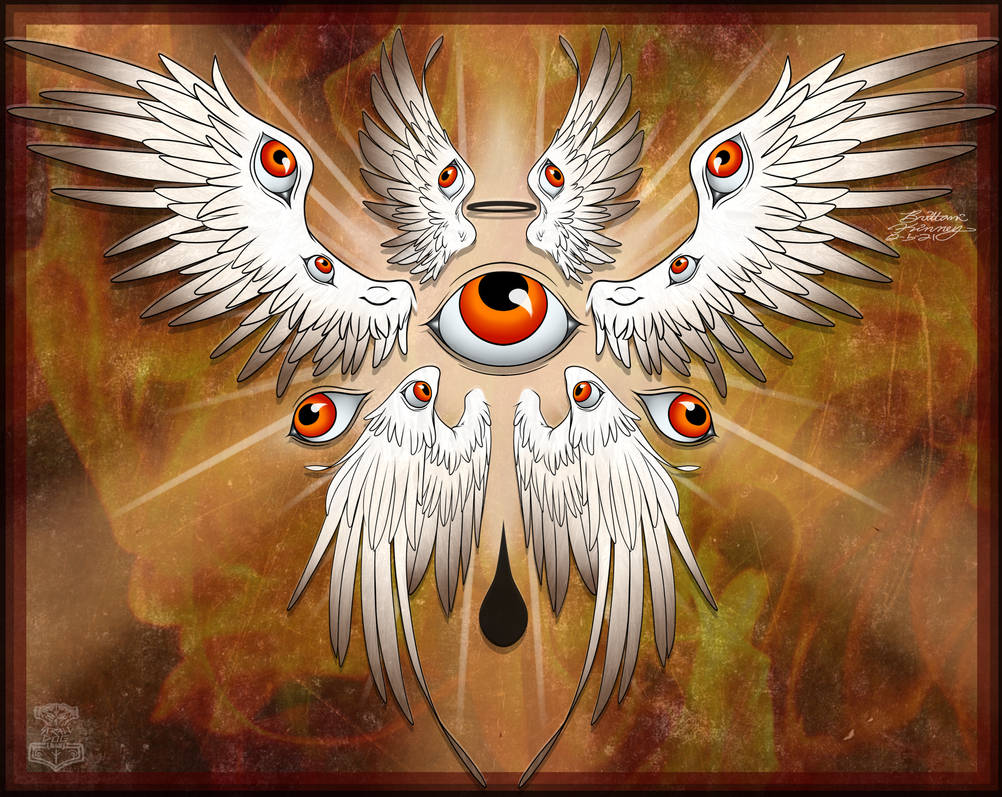In this thread: people bending over backwards to defend their insane, non-logical unit of measurement
Alternatively, people insisting that Americans must be math gods for using such a demanding and archaic system.
And plenty of people who don’t really care to understand how deep the roots of inch stuff is. Most people have no clue how much aerospace is commanding the need for Inch. (ALL and every aerospace fasteners are inch.)
Curious, since NASA uses metric. How do the two industries work together?
interestingly enough, there is an incident where a unit conversion cause a spacecraft to crash.
https://en.m.wikipedia.org/wiki/Mars_Climate_Orbiter
NASA specifies that companies who work with NASA should use metric units as a part of the contract. Lockheed produced software that output in imperial units and it caused the orbiter to flame out.
Logical, mathematically convenient, but not practically convenient. Without a measuring tool, there’s no good way to estimate anything besides a centimeter.
Every imperial unit of measure can be estimated whilst naked (but preferably clothed).
An inch is your distal thumb phalanx. A foot is your foot. A mile is, or was at one point, roughly 1,000 paces.
The weather can be estimated by going outside. Is it too hot? It’s in the upper third of the 100 degree scale. Too cold? Lower third, might snow. Cool enough to fully dress, but not too cold, right in the middle.
A healthy, big person is about 200 lbs. A very small person is about 100 lbs.
Converting between these units is useful in science, which is why science uses metric. But you could live your entire life on earth and never need to know how many distal phanages are in 1,000 paces. It literally never comes up. Who cares?
It’s why units are divided into fractions, rather than into a decimal system.
By the way, the only reason we use a base 10 numbering system in the first place is because we have ten fingers and it was easier for early mathematicians to count. But I digress.
If you’re dividing a length of rope, and all you have is the rope, it’s simple to divide it in half, and then half again, and then again in half. You could even divide into thirds, if you were feeling frisky. You just fold it over itself until the lengths are even. There are two friendly numbers that are difficult to do that with, though. Can you guess what they are? If you guessed 5 and 10, you nailed it, good job.
Same with piles of grain or hunks of beef or chunks of precious metals.
But what about units of volume, you ask? I don’t have a part of my body that holds roughly 8 oz of fluid to pour out. No, for that you’ll need a cup. Just a cup. Not a graduated cup with a bunch of little lines down the side. 1 cup. Or half a cup, or a third, or maybe a quarter cup. Again, easily divisible for easy measuring without any special tools.
But a gallon, you protest. A gallon is 16 cups! What the fuck is 16 cups good for? Why not 10 or 100, or create a decigallon for simple math? Because 16 can be divided in half 4 times. Measuring out portions of the whole is as simple as pouring out equal portions into similarly sized containers. Divisible numbers are easier to use without graduated equipment.
And that’s why time is measured in 24 hours, each hour is 60 minutes, each minute is 60 seconds. There’s a ton of history there, and we’ll ignore for this discussion the inaccuracy of measuring a day or a year. If the metric system is entirely superior, why don’t you demand we all switch to metric time? A year will still be roughly 365 days (again, setting aside the inaccuracy) but we could divide the day into 10 equal metric hours, or mours, and those mours into 100 metric minutes, or metrinutes, and then those metrinutes into 100 metric seconds, or meconds. 1 mecond would be 0.864 seconds, and a metrinute would be 1.44 minutes, which to most people would be an imperceptible difference in time. Hey, how many seconds is 1.44 minutes? You don’t know without a calculator because we don’t use metric for time, and it probably never bothered you once before now. What an insane, non-logical unit of measure time is.
Yes, metric let’s us convert millimeters to kilometers, or helps us determine how many calories it take increase 1 cubic centimeter of water by 10 degrees kelvin. It helps with those things because the units are arbitrarily defined to make the math easier, not to make the measurement easier. But that’s it, there’s no additional sanity, no additional logic. It’s easier to convert between units via math, because it was designed to be easier to convert between units via math. There are no additional benefits to the metric system.
This is either a way too elaborate troll or one of the dumbest things I have ever read and I can’t figure out which it is.
Point to the thing I said that was not true.
Wow you are actually serious. Okay here we go.
- Units of measurement are made to be accurate, while most of your rant talks about “estimating”. Being easily estimated adds zero value and it’s something you invented to try and make your point.
- Disregarding point 1, every single thing you said can be reversed by someone used to metric. I have no clue how to estimate things in imperial, but I can easily estimate 1 cm, 1 meter, 1 litre, 1kg, etc with a similar margin of error as you can estimate imperial, because I’m used to it.
- Your point about temperatures is the most boneheaded of the entire paragraph. Go to Chicago, ask someone what is “kind of hot” and what is “kind of cold”, and compare it to a New Orleans resident. Wanna bet they give wildly different answers? Also, again: what is the merit of this? If it’s 30 degrees C outside I consider it hot, 5 or below is cold. What does it matter which numbers you find important?
- About your rope, or your piles of grain and hunks of beef. I have no clue what your point is there. Do you know what we do when we want more precision? We just move the decimal point. You want 1/5 of a kg of beef? Might want to ask for 200 grams instead. I don’t even know what kind of point you’re trying to make there.
- Metric is standardised. A metre in Belgium is the same as a metre in France, and a metre in Norway, etc. You’re talking about a ounce. You mean an imperial ounce or a US ounce? Do you like pints? Do you want a US pint or prefer an Imperial one? Space ships have crashed because of nonsense like this.
As a final example, let’s go beyond units of measurement. If I place a book on the table and ask you to estimate the value of it: you might say something like 20$? I might say something like €20? We just use the currency we’re familiar with. What if I ask you to estimate the value of that same book in Vietnamese Dong without looking up anything? 50? 100? 200 000? I wouldn’t know. I don’t know if you buy a pencil sharpener or a car with 200k Vietnamese Dong. But a Vietnamese person would know, right?
You’re talking purely from a perspective of someone that is very familiar with one system and has very little knowledge of the other. It’s not that you -by your own omission- can only estimate something like a centimeter and not much else that the rest of the world breaks down when they see a 3 centimeter rope. Both systems might have merit, but metric is a clearly superior system in almost any perceivable and objective way that I can think of.
I feel like a lot of this is based on what you grew up with and you eventually related it to something to make it easier for you.
Like a cm is the width of a fingernail. A dm(10cm) is the size of a middle finger. 100m is 1 minute of walking. I know 1 metre is my normal stride.
Is it too hot? 30s. Is it cold? Less than 10. Is there snow? Less than 0. Is it cool enough to fully dress but not too cold? Around 20.
Big person? 100kg. Small person? 50kg.
The point is that you can make any system relatable.
Oh it’s absolutely just based on where you grew up. And there’s nothing wrong with that. Everyone uses a rather stupid time system compared to metric measurements, but we stick with it because that’s what everyone is used to.
Of course you’re right. The point isn’t that one is better than another, the point is that Imperial was historically easy to share and use. There’s a sense among metric users that the imperial system is stupid, illogical, unwieldy, and useless (see the comic and almost every comment in the thread). None of those things are true, and the advantages of the metric system hardly ever come up for most people.
It’s easy to hur dur Americans stupid, but the reality is always more complex.
To be fair, if it truly were more convenient, countries like Japan, China, India or the Middle East that had no cultural reason to prefer one over the other, wouldn’t have chosen metric.
I don’t think Americans are either stupid or more inefficient for having the clearly more impractical system, but I can’t help feel that the only reason they’ve kept their very odd measuring system is that they will never recognize anything ever being better in other countries than it is in theirs.
In a way, the imperial stubbornness among Americans feels like yet another display of American exceptionalism and their odd superiority complex, than anything logical or even pragmatic.
What a fat load of bullshit
What’s a “fat load” in metric?
Anything above a BMI of 100.
OK, but this is why certain Imperial measurements caught hold, and why Americans still use it. We also use metric for the things metric was created to measure.
They’re just the arbitrary numbers you know. I know below 10 is cold and below 20 is chilly. Above 20 is warm and above 30 is hot.
I know what a liter looks like and I know roughly how far 100m is. You learn the normal numbers for each system by using them. But metric is logical and imperial is random.
You know, this convinced me…
that I wouldn’t mind metric time actually
RemindMe 10 Megaseconds
I actually wrote a paper in high school extolling the virtues of metric time. It was not persuasive.
Brilliant. Now if we only used base 12 numbering system, things would be even easier to halve.
Why stop at base 12. Let’s go base-60. Divisible by 2,3,4,5 and 6.
Base 12 is better than base 10, but base 16, aka Hexadecimal is better still.
Why? (genuine question)
Base 16 is only divisible by a single prime, just a fancy name for base 2.
OK I’m looking up the history of the metric system now.
Have a go at ‘The Measure of All Things’ by Ken Alder, a very interesting book on that subject.
Thanks! Bookmarked (I got a ton of lemmy bookmarks, lots of reading to do lol)
How dare you have reasons and explaining them so thoroughly. I’m here to hate people because they are dumb.
A foot is a foot. Fantastic. Glad to know everyone has the same sized feet.
And the same length on their legs so we all pace the same distance.
I would say good troll, but it just seems too long to be ironic.
There aren’t many instances in normal life where accuracy and precision are that important. Modern humans can measure distances with lasers and satellite coordinates. You probably own a tape measure and at least one type of scale. But unless you’re building something, baking something, or selling something by weight, estimates are almost as good as knowing something precisely.
We see the same in countries that us metric. Most people estimate how many meters, kgs, or liters things are because taking the time to accurately measure isn’t necessary. Maybe your phone tracks your daily jog, but that’s only going to be accurate to within a few meters, and most people would round off to the nearest significant digit anyway.
There aren’t many instances in normal life where accuracy and precision are that important […] unless you’re building something, baking something, or selling something by weight
Yeah, because building, baking, or selling something by weight are totally not important and absolutely common “instances in normal life” 🤡
Good fucking grief…
Correct, the vast majority of humans won’t build, bake, or sell anything that requires scalable units of measure. A cup of milk doesn’t need to be precisely 237 mL of milk, nor would most people need to scale their recipe to feed 1,000. If you’re building a shed, dimensional lumber is plenty precise, and it doesn’t require converting the height of a ceiling into miles.
Jesus wept 🤦♀️
You do understand that precision has absolutely NOTHING, at all, to do with the units you’re using? Right?
And yes, when you’re baking, you need precision. Try making consistently good bread just by rule of thumb, I’ll wait for your results.
BTW, measuring things by weight is not just more precise by far, most of the time it’s also easier and faster.
But hey, be my guest trying to gauge that cup on your beaker that’s 10% off.
And yes, if your butcher sells you meat, you would like to pay what you bought, and not 5% more.
And it doesn’t matter if that’s g, lbs, oompah loompahs or whatever. 5% of something is 5%.
FFS is this a knuckle-dragging contest here?
For someone so belligerent about something so inconsequential, you’re also entirely wrong about almost everything. Ice your britches.
You do understand that precision has absolutely NOTHING, at all, to do with the units you’re using? Right?
Baldercrap. One of the primary advantages of the metric system is that it can scale down for additional precision as necessary. Metric easily scales infinitely in both directions, so you only need one unit of measure for each type of measurement. Imperial units don’t easily scale, so the level of precision is tightly bound to the unit you select. You’re not going to get the same precision from miles that I will from inches. So that was a stupid thing to say angrily.
And yes, when you’re baking, you need precision. Try making consistently good bread just by rule of thumb, I’ll wait for your results.
Yeah, that’s why I brought up baking as an example. But the cool thing about baking is that recipes exist in both metric and imperial units. I can measure my flour in ounces if I want, and take a teaspoon of salt, half a cup of milk, one large egg, and there’s never any reason to convert between those units because who cares? I’m not making dough for 1,000 loaves, nor would I ever need to figure one one-thousanth of a loaf, so metric doesn’t provide any advantages for the typical home baker.
BTW, measuring things by weight is not just more precise by far, most of the time it’s also easier and faster.
With a digital scale, sure. I have one and it’s great. I highly recommend it especially for baking. But digital scales weren’t always widely available or inexpensive, and most people don’t own one. Nearly everyone who uses a kitchen to cook will have access to measuring scoops. And not for nothing, but my grandma never measured anything and was an excellent baker. It took years of trial and error but she could adjust her recipes to a humid day to make perfect baked goods.
And yes, if your butcher sells you meat, you would like to pay what you bought, and not 5% more.
And it doesn’t matter if that’s g, lbs, oompah loompahs or whatever. 5% of something is 5%.
That’s why butchers use scales. Grocery stores also use scales for produce and deli produces like cheese. Would it surprise you to learn that the vast majority of humans in America are not butchers or grocers? Their math might be easier with metric, especially when ordering bulk quantities, but for the typical customer, they want an 8 oz steak and a half pound of cheese. So why don’t butchers and grocers use metric?
Because their customers don’t use metric, and there are more customers than butchers or grocers. The conversion between units of measure, the entire reason metric exists, just isn’t a daily consideration. It makes no difference if the steak and the cheese weigh the same, or if you can scale up and down.
Also, another tangential point, most of the math today is handled by computers. Figuring the unit price of a side of beef or a pallet of cheese isn’t something people need to do in their head anymore. The inventory database will effortlessly convert between pounds and ounces and stones and tons. It can even convert everything to metric if you like.
FFS is this a knuckle-dragging contest here?
Gosh, you’re rude. Maybe spend less time attacking me personally and try to think of a valid argument. Or better yet, just go back and actually comprehend what I wrote, and maybe you’ll understand that our positions aren’t really that far apart.
precision has absolutely NOTHING, at all, to do with the units you’re using
1 degree Fahrenheit contains the same amount of heat as 1.8 degrees Celsius. The base unit provides more definition. If you’re limited to just whole numbers, Fahrenheit will give you more precise information about heat.
Of course, decimals exist, so it really isn’t a big deal.
Yes. People estimate things. Because we don’t carry around a scale in our pockets. What does that have to do with anything?
The point of metric system is that things should be scaleable. And relatable. Between different types of measurements, such as weight and volume.
Yes, that’s the point. The imperial system has been succesful and remains popular because people do carry around (rough) scales with us most of the time, and because the advantage of being accurate and scalable really isn’t that useful in day to day living. Having a single unit of measure for the length of a aheet of paper and the distance to the nearest city isn’t a significant advantage for most people in most applications. I don’t need to know how many inches are in a mile, because the conversion usually isn’t necessary. The point of the metric system you’ve described has no advantage in most normal use cases, and we use it when it does have an advantage.
What do you mean “remain popular”? The imperial system has roughly 500 million users. While metric has over 7 billion.
And even in the countries where imperial is used, the scientific community in them still use metric.
How can you even attempt to talk about the advantage of normal use, when you don’t even know how to use them?
Metric is a tool. Just because you don’t know how to use the tool, doesn’t mean it’s not advantageous.
Ofc conversions in imperial isn’t necessary, it’s gibberish. No normal person will be able to relate the two.
Your argument boils down to you telling us writing is pointless because no one knows how to read.
Ofc they can’t read when there’s nothing to read.
How can you even attempt to talk about the advantage of normal use, when you don’t even know how to use them?
Metric is a tool. Just because you don’t know how to use the tool, doesn’t mean it’s not advantageous.
Ofc conversions in imperial isn’t necessary, it’s gibberish. No normal person will be able to relate the two.
Are you under the impression that Americans don’t know how to use the metric system? We learn to use it in elementary school. We regularly go between the two and relate them to each other.
Your comment is unnecessarily arrogant based on complete ignorance.
It’s a measurement system for humans not calculators.
It’s a measurement system for dumbasses who are scared of base 10 operations
Every imperial unit of measure can be estimated whilst naked (but preferably clothed).
so I can ask a 9 yr old child to walk out naked to the streets to measure a thing in their foot and:
- I’ll get the exact same answer as if I send an adult priest naked to the street to measure the same thing in their foot
- I’ll not get the priest to rape the kid
?
Ah nice, this should be a constructive dialogue between open minded and empathetic individuals.
grabs popcorn
how many ounces of popcorn?
Which ounce are we talking about?
the one you would use for gold.
liquefied gold
I’m struggling to understand the joke, can you kindly explain? Is this an imperial vs metric thing?
The joke is that British people have so little going for them that they must resort to making inaccurate jokes about outdated stereotypes based on cultural generalizations.
That’s not exclusive to the British, everyone does it.
Why are you bringing the British into this? What did they do to you?
They brought us the Imperial system.
how about we all agree that the best system is american units with metric prefixes. After all it is obvious that it takes an hours to drive 318 kilofeet
What’s that in centimiles?
6,000 cm
See? This is why I like our system the best. It just got those nice even numbers. 318 kf = 6000 cm, easy peasy.
Sorry did the math wrong its 100,000,000 cm
How much is that in football fields?
american or european?
That makes more sense. I knew it was over 9000!
do you want d&D memes because this is how you get D&D memes
I love the smell of Kilofeet in the morning 😂
A truly logic system would be entirely designed around a base-12 number system. But we were born with an imperfect set of 10 fingers and that doomed us.
Those aliens have 6 fingers. It’s an absolutely ironic twist that their discussion on measuring systems is super illogical for them, and yet logical is the verbiage they use.
Base 6 however is perfect for 2 hands with 5 fingers each. You can easily represent the six possible digits 0 1 2 3 4 5 on each hand, and can therefore comfortably count to 55 (decimal 35) with two hands, using our familiar place-value numeral system.
I like the idea of base 12 counting the segments of your fingers with your thumb. Though its less intuitive.
Care to elaborate on how base 12 would be better than base 10 in this case?
Basically it’s because 12 is more divisible than 10. Factors of 10 are 1,2,5 and 10. 12 has 1,2,3,4,6 and 12. This gives more flexibility when discussing numbers. Our time is technically using base 12, which is why we can say quarter past 4 and it means a traditional whole number. That’s the argument I’ve heard anyway
Base 10 is the most easy to scale, you just move the coma and add 0s. Base 12 doesn’t allow that easily
A base 12 number system would have two extra symbols. Twelve would be written 10 and be called ten, and the number 144 would be written 100 and be called one hundred.
Everything you may think is inherent to base 10 is largely not. The quirky rules of 9’s multiplication table would apply to 11’s. Pi and e would still be irrational, and continue being no no matter which base of N you choose. Long division would work the same. Etc.
I’ll also defend fractional measurements over decimal to my dying breath. Decimal measurements can’t express precision very well at all. You can only increase or decrease precision by a power of 10.
If your measurement is precise to a quarter of a unit, how do you express that in decimal? “.25” is implying that your measurement is precise to 1/100th - misrepresenting precision by a factor of 25.
Meanwhile with fractions it’s easy. 1/4. Oh, your measurement of 1/4 meter is actually super duper precise? Great! Just don’t reduce the fraction.
928/3712 is the same number as 1/4 or .25, but now you know exactly how precise the measurement is. Whereas with a decimal measurement you either have to say it’s precise to 1/1000th (0.250), which is massively understating the precision, or 1/10000th (0.2500), which is massively overstating it.
Fractional measurements are awesome.
This is one of the dumbest fucking trolls I’ve ever seen.
Congratulations? I guess?
Honestly, I don’t give a shit either way. Wish us 'mericans were on the same wavelength as the rest of the world, but we’re awful in so many ways it doesn’t even register.
However, this troll is gold and I think you’re all sleeping on his genius
i’ve never heard of anyone using non-reduced fractions to measure precision. if you go into a machine shop and ask for a part to be milled to 16/64”, they will ask you what precision you need, they would never assume that means 16/64”±1/128”.
if you need custom precision in any case, you can always specify that by hand, fractional or decimal.
But you can’t specify it with decimal. That’s my point. How do you tell the machine operator it needs to be precise to the 64th in decimal? “0.015625” implies precision over 15,000x as precise as 1/64th. The difference between 1/10 and 1/100 is massive, and decimal has no way of expressing it with significant figures.
sure you can, you say “i need a hole with diameter 0.25” ± 0.015625“”. it doesn’t matter that you have more sig figs when you state your precision
but regardless, that’s probably not the precision you care about. there’s a good chance that you actually want something totally different, like 0.25±0.1”. with decimal, it’s exceptionally clear what that means, even for complicated/very small decimals. doing the same thing fractionally has to be written as 1/4±1/10”, meaning you have to figure out what that range of values are (7/20” to 3/20”)
Having to provide a “+/-” for a measurement is a silly alternative to using a measurement that already includes precision. You’re just so used to doing things a stupid way that you don’t see it.
providing an arbitrarily non-reduced fraction is an even sillier alternative. the same fundamental issue arises either way, and it’s much clearer to use obvious semantics that everyone can understand
It’s not the same issue at all.
How do you represent 1/64th in decimal without implying greater or lesser precision? Or 1/3rd? Or 1/2 or literally anything that isn’t a power of 10?
You’re defending the practice of saying “this number, but maybe not because we can’t actually measure that precisely, so here’s some more numbers you can use to figure out how precise or measurements are”
How is that a more elegant solution than simply having the precision recorded in a single rational measurement?
I’m scratching my head, wondering why all the downvotes.
This feels like such a niche reason to prefer fractional measurements.
No measured value will be perfectly precise, so it doesn’t make sense to use that as a criteria for a system of measurement. You’re never going to be able to cut a board to exactly 1/3 of a foot, so it doesn’t matter that the metric value will be rounded a bit.
Not “a bit”. You can have a 9x difference in precision and be unable to record it.
I’ve always sucked at math tbh, but fractional measurements are my jam. It goes faster in my head and I can visualize things better.
When my American friends insist that feet and inches is just easier for them, I just nod in agreement and give them measurements using rods, chains and furlongs as well. If you’re going to go Imperial, you have to know 'em all. An acre is a chain by a furlong, totally logical as that would be 4x40 rods which is of course 43560 square feet. I guess it makes complete sense when your world is only a few furlongs across.
Most people who insist that imperial is better still have absolutely no idea how many spoons there are to a cup, how many cups to a gallon, how many inches to a mile, how many square yards to an acre.
As an American, anyone who claims the Imperial system is better about anything is lying or stubborn. An argument could be barely made for Fahrenheit and even then it’s not worth it.
Imperial is definitely worse, but the number of teaspoons or tablespoons to a cup (48 and 16) is useless information. Do you measure out 50 grams one gram at a time? Do you regularly use the fact that a kilometer is 100,000 cm?
Its pretty useful information when you’re converting recipes. Most measuring sets don’t come with a 1/8 cup or smaller, so it’s pretty helpful in the case that you end up with a small fraction of a cup.
I’ve worked in both, and if precision isn’t as important as accuracy feet and inches, and only feet and inches, can be easier. A third of a foot is 4 inches, yay whole numbers. A third of a meter is 33.33 cm. Way harder to measure and calculate on the fly. If anything I’m working on has measurements or tolerances under a quarter of an inch, I prefer metric.
A third of a foot is 4 inches, yay whole numbers. A third of a meter is 33.33 cm.
Yeah, but a foot is about 30 centimeters. Easy to calculate half, a third, a fifth, a sixth of that. Yay. Whole numbers.
Not particularly hard to measure and calculate on the fly.
For what it’s worth, a chain is a literal standardized metal chain that surveyors used when physically staking out parcels. It’s not a unit normal people have ever used.
An acre is a chain by a furlong because a furlong is the distance you’d plow with an ox, and an acre is about the area you’d plow in a day. They derived the standard chain from that, much as metric chains are 20 meters or 30 meters. France used to use 10 meter chains, with 20cm links.
Normal people don’t measure things in chains, whether metric chains or imperial.
But what happens if you have a weak ox or a really fast ox? Then the distance would change, affecting the area, no?
Not really, since plotting land would be based off of the average Ox. That just means you’d be done with that field slightly sooner.
I mean I can respect that if they’ve just really known imperial forever. I just take issue with them confusing it being easier for them for that specific reason with it being intersubjectively better, which is dumb.
When I find a wood working video on YouTube from the states it blows my mind how anyone can not just adopt metric “This is 5” 4/57 and we need to cut it to 5” 5/45 and a half” bzzzzzzz.
I may be biased, but I think it kinda makes sense. All the fractions are really just powers of two:
One half
One quarter
One eighth
One sixteenth
One thirtysecond
etc.Oh yeah, totally makes more sense to say “it’s 3/64ths of an inch” than “it’s 2 millimeters.” Completely reasonable.
So reasonable, in fact, that in most manufacturing that still uses imperial measurements they long ago abandoned fractions and moved to decimal inches.
Which leads to unholy abominations such as the wood shop sending over “cut off 3/64ths” and the metal shop cutting off 0.046875".
Mate, just use metres. It’s way easier
Ain’t no freedom in meters!
Sure there is. Also equality and fraternity.
And all of the fractions in metric are just powers of 10: one tenth, one hundredth, one thousand. Powers of two are great when you’re working in base 2. It’s a big hassle when you’re working in base 10.
Everyone also gravitates to length and how fractional powers of two are sensible. I’ll grant that they’re at least sensible although awkward in base 10. But what about every single other thing? For lengths greater than one inch, there’s no consistent pattern. For volumes there’s no pattern - mass, weight, etc. The thing is a monstrosity. People pick out one part that’s halfway acceptable and act like that’s a defense of the rest of the pile of garbage.
https://www.youtube.com/watch?v=EUpwa0je6_Y
In case the metric folk want to write it down and work it out yourself:
7" 1/4 minus 6" 7/8 = 184mm minus 174mm
7" 1/4 minus 5" 5/8 = 184mm minus 142mm
I’ll just leave this here: https://youtu.be/iJymKowx8cY
TLDW: metric is better because all the different kinds of units were designed to work together.
Where as imperial units developed organically, within specific trades/use cases. They’re not all supposed to work together.
I use imperial because that’s what I was raised with, but I recognize metric is better in many ways. My only gripe with metric is the gap in units between Centimeters and Meters. A foot is convenient size for most things.
Well buddy, you’re in luck because today you get to stop griping about something that’s been part of SI units for the entirety of SI units.
“If you’re under eighteen decimeters, swipe left.”
Standards perhaps a little too high
Interesting. Looks like a decimeter comes out to just under 4", so still a fair bit less than a foot. I guess that’s where a half-meter would come in. Honestly I think I just like imperial linguisticly, the terms and slang for all the units tickles me. Metric has a more sterile vibe. Which is fine, I reckon that was the whole idea of it!
Fun fact British imperial units are slightly different than American, because of course they are! This is an issue for folks that own, and work on, vintage British cars. American wrenches don’t fit!
Jefferson actually intended to make metric standard in the US back in 1793. Unfortunately, the ship carrying the standard measurements from France was captured by pirates.
Wake up babe! I know what we’re gonna use our time machine for…
Problem with a foot is, that it creates a reference, to well a human foot. But my feet are 11" whereas my gfs feet are 9.4" and my fathers feet are 12".
So four foot for my gf would be three foot for my dad. That is a terribly inaccurate references.
We used to have the same thing for cloth, where the length was measured with your underarm. Guess the shorter traders got rich off it.
And just as you noticed people are different sizes so would have people of the past. They weren’t stupid or blind. Probably some room for haggling or less business, if you’re trying to screw folks.
It’s a decimal system, so t’s “all in 10th” deci=1/10. Meter > decimetre (dm) > centimetre (cm). So I think what you’re looking for is decimetre (dm) = tenth of a meter 😊
And centi denoting a factor of one hundredth and so on 🙃
Deci is actually 1/10. Deca is 10
Yup thnaks, was a typo 😊
Interestingly no one actually uses centimetres, in my line of work everything is measure in millimetres, even something over a metre. Average sheet steel size is 2400 x 1200 mm
deleted by creator
In was just thinking of this video! There really are some legitimately good things about the imperial system, but metric is still better, but imo not quite enough better to take the work of converting everything in the country over to it
deleted by creator
My only gripe with metric is the gap in units between Centimeters and Meters. A foot is convenient size for most things.
Doesn’t seem to be an issue though, the decimetre is rarely used. Sometimes you find dL, decilitre, for 100 ml. It seems that 1, 100, and 1000 are convenient enough for most things.
That’s why we have decimeters…
“Why do they use the much more complicated system?” “Nobody actually knows.”
I’m not defending it, but it’s because 12 has more factors than 10
10 has 2 and 5
But 12 has 2,3,4,6
So 1/2 ft, 1/3 ft, 1/4ft and 1/6 ft all have a whole number of inches
But it doesn’t use base 12. Take distance. Values smaller than 1/64" are measured using “thou”, “tenths”, and “millionths”, which are decimal multiples of 1/1000’, 1/10000", and 1/1000000" respectively.
Values between 1/64" and 1" are measured using dyadic rationals, i.e. base-2 fractions.
Above 1" it’s mostly base 12,except for the yard.
Using a base12 system would only make sense if we all started counting in base12 too.
If enough people want that, i’d be down to start counting in base12, but i don’t think many people will lol.
Silly Americans, you could be measuring your winnies in GIGAMETERS and yet decide to keep using the kings thumb as a reference for it*
Base 12 is way more logical than base 10, I bet aliens would think we’re stupid for counting in base 10 just because we have 10 fingers, my opinion on this is infallible fight me
why is 12 better
12 is more divisible than 10. 10 can only be cut into 5’s and 2’s, 12 has 2, 3, 4, and 6.
Similar reason why 360 deg is a full circle and time is kept in 12s and 60s.
but 10 exponentially speaking is more sound 10 100 1000 10000 100000 etc
Works with base 12 too, look: 10 100 1000 10000 100000 etc.
That would be the case for any base system. Do you know what a base system is? It’s basically how many values before you go to the next place. So base 2, or binary, is 0 and 1. Counting goes 0, 1, 10, 11, 100, … Base 16 is generally 0-F. Counting goes 0, 1, 2, 3, 4, 5, 6, 7, 8, 9, A, B, C, D, E, F, 10, 11, 12, 13, 14, 15, 16, 17, 18, 19, 1A, 1B, 1C, 1D, 1E, 1F, 20,…
The way base 12 would work is that you’d add 2 characters and you would write “12” as 10. Which looks really confusing because we’re all used to base 10. If you were then to do 1010 in base 12 (so in base10 that would be 1212) you’d get 100 (144 in base10) so this still stands whatever base you use.
True! And that’s probably why we use base 10, also we have 10 fingers. But that’s usually the argument for base 12. I think we do ok using it in just certain cases, like time and inches.
Actually this works fine in base 12 too! See my other comment for a more in-depth explanationz
Base 12 is as arbitrary as base 10 and we don’t know what aliens would think nor should we care. Base 16 makes more sense because it is 2x2x2x2 instead of 2x2x3
The Egyptians and Babylonians counted in base 12. They did so by counting each section of the fingers on one hand with their thumb (4 fingers, 3 sections each = 12).
From what I understand they used base 60. They counted each finger section on one hand with each of the fingers on the other (5x12)
Or heximal/senary. Arguably imperial is already duodecimal/hexadecimal/sexagesimal for the fractional parts.
deleted by creator
Man I love this comic. Glad to see it on Lemmy!
One of his books explains it with 3 fingers on each hand and 2 toes on each foot - so a base-10 system makes vague sense for those beings.
deleted by creator
It’s not that a system based on base 6 would be strange. That’d be a logical system, too. Just as any other system that consistently uses a particular base.
However, a system that uses numbers of base whatever but then proceeds to jump from one unit to the next one in completely arbitrarily sized steps such as 3; 22; 10; 8; 3 is illogical in any base.
Mostly because it’s very easy to make calculation on base 10. If i ask you to tell me how many millimeters are in 5.7 meters you could probably reply easily without a calculator. You probably wouldn’t do it as easily if it wasn’t base 10
We define 1000 mm as one meter as we are base 10 centric. If we live in a base 8 world, we would have define 8x8x8 mm as one metre and the answer to 5.7 m base 8 would be 5700mm base 8 too
It’s not fundamentally easier to do calculations in base 10. It’s only easier for us because that’s what we learn as children.
If our number system was based on a superior base, like dozenal or senary, we would be able to do calculations on that base easily and would find working in tens awkward.
I disagree. Base 10 is innately more intuitive because you move a decimal to shift between orders of magnitude.
You disagree because you don’t understand how number bases work.
this is one of the most confidently incorrect answers ive ever read. well done!
Because it’s intuitive. Calculating orders of magnitude is literally just a matter adding or removing significant digits.
That’s literally the same way with any other base. We just defined orders of magnitudes to be multiples of 10 because we use base 10. We could just as well have used other multiples.
Why use decimals when reducing fractions is SO EASY
Technically the metric system is “the preferred system of weights and measures for United States trade and commerce” as per the Metric Conversion Act of 1975.
You’re just also allowed to use lbs and feet and stuff and most people do.
And in the sciences and drug dealing and the military, we use metric exclusively.
But for some idiotic reason, construction engineers often use imperial units and I have no idea why. Like buildings are built in pounds and feet and stuff, with half inch bolts and 2x4 (ish) lumber and half inch plywood. It’s idiotic.
I don’t generally defend imperial, but feet and inches are actually really useful in construction. Base 12 is easily divisible by 2, 4, and 3. You often need to divide architectural elements in thirds.
That might be somewhat useful if it was consistently applied, which it is not.
And it’s maybe useful for fractions, but how many feet are in a mile again? 5280? A square yard is what now… 1296 square inches?! Who the fuck is supposed to memorize all that?
What’s a 1/4 square yard in square inches?
That’s not easy, that’s putting the mental into mental arithmetic.
Again people making me defend imperial, I think metric is better.
I see this argument all the time, converting between these units is hard cause the numbers are weird. You have to stop thinking about imperial as a system, it’s not. No one should convert miles to feet, they are not intended to measure on the same scale.
None of the conversions are easy because imperial is just a random collection of units that were being used to measure different things.
Yeah, no one should be able to make a quick sanity check for things that span multiple powers.
-
“Hey Bob, we have 5000 of those 78 ft rails, that enough for the 100 mile railroad?”
-
“What do I look like, a fucking calculator?”
vs
-
“Hallo Heinz, how mäny hecto-liter do ve kneed für 1000 0.5l bottles of Bier?”
-
“20, boss.”
The amount of people going completely out of their way to die on their little cubic ft hill actually defending they’re incapable of easily and consistenly calculating units is just utterly ridiculous. “Nobody should be doing this!!!1!”
No, wait, the people in here telling people that “dozenal” is superior, but not realizing they’re not using a “dozenal” system at all, they’re just counting to twelve in decimal. Those are also making me question whether humans actually went to the moon…
Keep putting those words in my mouth. I’m not dieing on any hill, just trying to provide some context about why imperial is so weird. I still think metric is better.
You seem really upset about something that really doesn’t matter that much, are you okay?
Did I mention you specifically when I said „the amount of people…“? See.
And if it doesn’t matter much to you, why do you keep commenting? Nobody’s „making“ you defend anything. Are you okay?
-
As a former structural engineer who lived on a Jobber 5 all day, that’s still pretty niche overall. Easier because it’s what your used to maybe, but outweighed by situations where it’s not. Try doing trig with fractions and then tell me imperial is better.
Does it matter whether you punch 3/8 or .375 into a calculator? Don’t tell me you calculate stuff by hand…
Trig is literally the math where you start dividing a circle in fractions and doing the math in base 360.
What the hell are you talking about?
I’m talking about trig using feet and inches. You know, rise, run, slope… Have you ever used trig outside of school? I don’t understand what you’re confused about.
right now i use it for waves and reflections. that’s all fractions and degrees. before it was machining and tbh for me that was faster to go to the book for the answers than calculate everything out.
truly trigonometry is a land of contrasts.
Regan also never bothered to reinstate Imperial standards at the bureau of weights and measures (because it would have cost a small fortune). So our units are officially defined by the their metric counterpart. Legally speaking an inch is 2.54 centimeters.
Screw that, we’ll make them use Metric. BY FORCE!
Yep, that’s what Napoleon did…
How do you plan to do that when each of us is issued an assault rifle at birth and our military is 20x bigger than the next closest military? In other words, bring it on!
Looking forward to your new animated series!
Yes indeed! Just checked and it’s out in 6 days.
I feel like this is my wheel house.



















